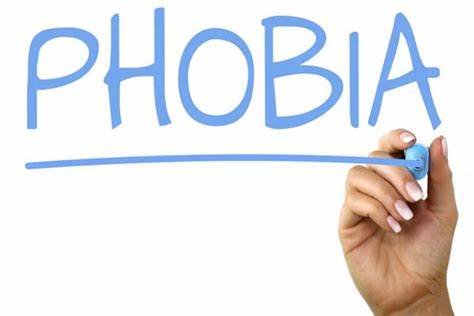The villain’s speech is one of the most iconic moments in any movie. The villain’s speech is often a critical moment in the movie, where the antagonist articulates their motivations, worldview, and goals. It is a moment that can make or break a movie, as it sets the tone for the final act and determines the story’s outcome. This essay will explore the psychology and film conventions used in evil villain speeches in movies. We will examine filmmakers’ techniques to create a convincing and memorable villain speech that is technically and metaphysically impactful.

The Psychology of Evil Villains
The first step in understanding the psychology of an evil villain’s speech is to understand the villain’s psychology. Evil villains are often depicted as being motivated by power, greed, and a desire for control. They may also be driven by a sense of vengeance, a desire for revenge against those who have wronged them. Villains may see themselves in a battle against good and may view themselves as a necessary evil that must be tolerated to achieve the greater good.
Their backstory often shapes the villain’s psychology. Many villains have suffered trauma, such as abuse or neglect, which has led them down a path of darkness and destruction. Villains may feel justified in their actions, believing they are righting wrongs or seeking justice for past injustices.
Another factor that influences the villain’s psychology is their worldview. Many villains see the world as a harsh, unforgiving place where the strong prey on the weak. They may believe they are doing society a favor by taking control and imposing order on a chaotic world. This worldview often leads to a sense of entitlement and a belief that the ends justify the means.
Iconic Movie and their Villains
Air Force One, Die Hard, and Wrath of Khan are all examples of movies that feature memorable villain speeches. In Air Force One, the villain, Ivan Korshunov, is a Russian terrorist who has hijacked the President’s plane. In his speech, Korshunov argues that his actions are justified by his people’s suffering and the American government’s corruption. His speech is delivered confidently and persuasively, with a clear sense of purpose and conviction.
In Die Hard, the villain, Hans Gruber, is a German terrorist who has taken over a Los Angeles skyscraper. Gruber’s speech is delivered with charm, humor, and menace as he explains his plan to steal millions of dollars in bearer bonds. Gruber’s speech is notable for its rhetorical questions and clever wordplay, which keep the audience engaged and guessing his true intentions.
In Wrath of Khan, the villain, Khan Noonien Singh, is a genetically-engineered superhuman who seeks revenge against Captain Kirk for stranding him on a deserted planet years earlier. Khan’s speech is delivered with rage and bitterness as he accuses Kirk of betraying him and destroying his people. Khan’s speech is notable for its use of literary allusions, including a quote from Moby Dick, which emphasizes his obsession with revenge and willingness to do whatever it takes to achieve it.
The Film Conventions of Evil Villain Speeches
Now that we understand the villain’s psychology let’s examine the film conventions used in evil villain speeches. These conventions are designed to create a sense of tension, drama, and power as the villain delivers their message to the hero and the audience.
A dramatic setting is one of the most important conventions of an evil villain speech. Villain speeches often occur in superb locations, such as a mountaintop fortress or a lavish ballroom. The setting is designed to create a sense of grandeur and importance, as the villain speaks from a position of power and authority.
Another convention of villain speeches is the use of music and sound effects. Music can create a sense of tension and foreboding as the villain’s theme music swells in the background. Sound effects, such as thunder or explosions, can add to the drama and heighten the impact of the villain’s words.
The use of camera angles and lighting is also critical in villain speeches. Camera angles can create a sense of dominance or vulnerability, depending on the perspective used. Lighting can also highlight the villain’s face or create shadows, adding mystery and menace.
The Language of Evil Villain Speeches
Let’s examine the language used in evil villain speeches. The villain’s language is designed to be robust, persuasive, and intimidating. It often includes rhetorical devices such as repetition, metaphors, and allusions.
One common technique used in villain speeches is the use of persuasive language. Villains often use persuasive language to convince the hero or the audience of their worldview. They may use logical arguments or emotional appeals to sway their listeners to their side.
Another technique used in villain speeches is the use of rhetorical questions. Rhetorical questions are asked for effect rather than to elicit a response. Villains may use rhetorical questions to challenge the hero’s beliefs or emphasize the situation’s gravity.
Metaphors and all
Another technique used in villain speeches is the use of metaphors and allegories. Metaphors and allegories can be used to convey complex ideas in a simple and accessible way. For example, a villain may use a metaphor to describe themselves as a force of nature, such as a hurricane or a wildfire, emphasizing their power and unpredictability.
Allusions to history, mythology, or literature can also be used in villain speeches. Allusions can create a sense of depth and meaning and highlight the villain’s intellect and cultural knowledge. For example, a villain may allude to Shakespeare’s Macbeth, emphasizing their ambition and desire for power.
Villains may also use repetition to create a sense of urgency or importance. Repeating a phrase or word can emphasize its significance and create a sense of rhythm and momentum. For example, a villain may repeat the phrase “the end justifies the means” to emphasize their belief that their actions are necessary to achieve a greater good.
Finally, the language of villain speeches often includes threats and intimidation. Villains may use threats to create a sense of fear and to assert their dominance over the hero. For example, a villain may threaten to harm the hero’s loved ones if they do not comply with their demands.
Lasting Impact
Ultimately, evil villain speeches in movies are critical in the story, where the antagonist articulates their motivations, worldview, and goals. The villain’s psychology is shaped by their backstory, worldview, and sense of entitlement. The film conventions of villain speeches include dramatic settings, music and sound effects, camera angles, and lighting. Finally, the language of villain speeches often includes persuasive language, rhetorical questions, metaphors and allusions, repetition, and threats and intimidation.

Evil villain speeches are not only crucial to a movie’s plot but can also have a significant impact on the audience. They can be technically and metaphysically impactful, inspiring fear, awe, and admiration. The best villain speeches stay with the audience long after the movie ends, leaving a lasting impression of the villain’s power and charisma.
Max E. Guttman is the owner of Mindful Living LCSW, PLLC, a private mental health practice in Yonkers, New York.
- Max E. Guttmanhttps://mentalhealthaffairs.blog/author/max-e-guttman/
- Max E. Guttmanhttps://mentalhealthaffairs.blog/author/max-e-guttman/
- Max E. Guttmanhttps://mentalhealthaffairs.blog/author/max-e-guttman/
- Max E. Guttmanhttps://mentalhealthaffairs.blog/author/max-e-guttman/






